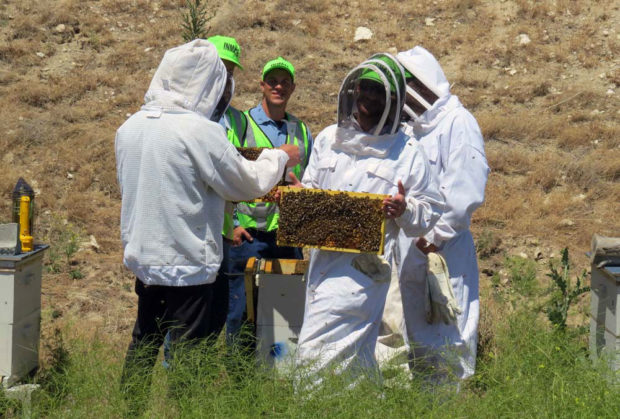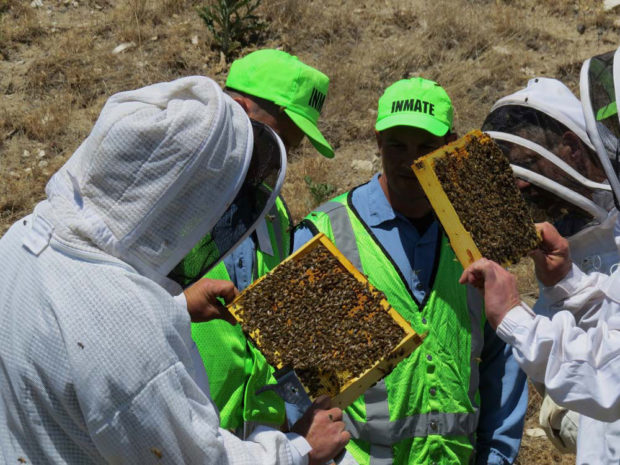By Graham Klag, SPP Prairie Conservation Nursery Coordinator and MES Student
Graham recently presented on the SPP-supported project at an International Association for Landscape Ecology – North America conference; see his virtual poster here.

The Sustainability in Prisons Project (SPP) affords Master of Environmental Studies students an endemic and indelible academic and professional-development opportunity. My experience as the Prairie Conservation Nursery Coordinator for the programs at Stafford Creek and Washington Corrections Center for Women (SCCC and WCCW) gave me the chance to promote my academic and professional passion: promoting the restoration and enhancement of marginalized populations of Pacific Northwest prairie plant communities. While I contributed to the ecological functions of the Pacific Northwest’s most endangered ecosystems, I also learned how to better support the basic human functions of endangered and marginalized populations of people.
Working with incarcerated technicians continually revealed their resourceful creativity and their desire to meaningfully contribute to the society from which they have been disconnected. Masters students such as myself support technicians’ connections to ecological concepts, while we also connect our (my) consciousness to our nation’s culture of incarceration.

My thesis research project uses coconut coir mats for the restoration and enhancement of the early-blue violet (Viola adunca) for the larval development of the Oregon silverspot butterfly. The project has been possible only due to the combination of resources and partnerships that SPP has afforded me. As part of my work coordinating SPP’s Prairie Conservation Nurseries, my position helped me access hoop house space, seed, materials, staff, input, and other resources that have led to the success of my research project. The experience allows me to see the value of project-based adaptive management, scientific research, and education to advance the skills and education of technicians and myself.


During my time with SPP, I have learned that this connection to place is a basic human need. While dealing with incarcerated technicians’ unfortunate connection to the place of prison, we fostered their connection to other ecosystems — ones that need our help. The fortune of those rare ecosystems can be found from more and more connections to conservation science.
I see restoration ecology as a place-making process. Through my research design and implementation, technicians and I shared in the scientific method, connecting us to the coastal prairie environments of the Washington and Oregon coast. As part of that process, this year we constructed a prairie garden inside the facility at SCCC; we planted extra prairie plants that we had grown for various restoration sites within the Salish lowlands and created a bit of prairie inside the prison.
At the basis of all life’s functions is the need for connection. My position with SPP combined with my studies provides me a connective power. I wish to share that power with individuals disconnected from our modern society. SPP is a true asset to The Evergreen State College’s mission and core values, providing academic and professional empowerment opportunities to students, staff, and the greater community. I feel lucky to be a part of this special community experience and reflect on human ecology and empathy. I have new insight into how the landscape reflects how we treat each other and the good life of being a Greener.






 As an audience, they were fantastic. I’ve never made presentations where the focus was as intense. And I feel my short time with these guys is totally inadequate to turn them into good beekeepers. The barriers are many – no direct communication, no internet access, limited equipment and supplies, limited time together. But they try, and even though we’ve had some pretty big failures, we still learn together.
As an audience, they were fantastic. I’ve never made presentations where the focus was as intense. And I feel my short time with these guys is totally inadequate to turn them into good beekeepers. The barriers are many – no direct communication, no internet access, limited equipment and supplies, limited time together. But they try, and even though we’ve had some pretty big failures, we still learn together.
















